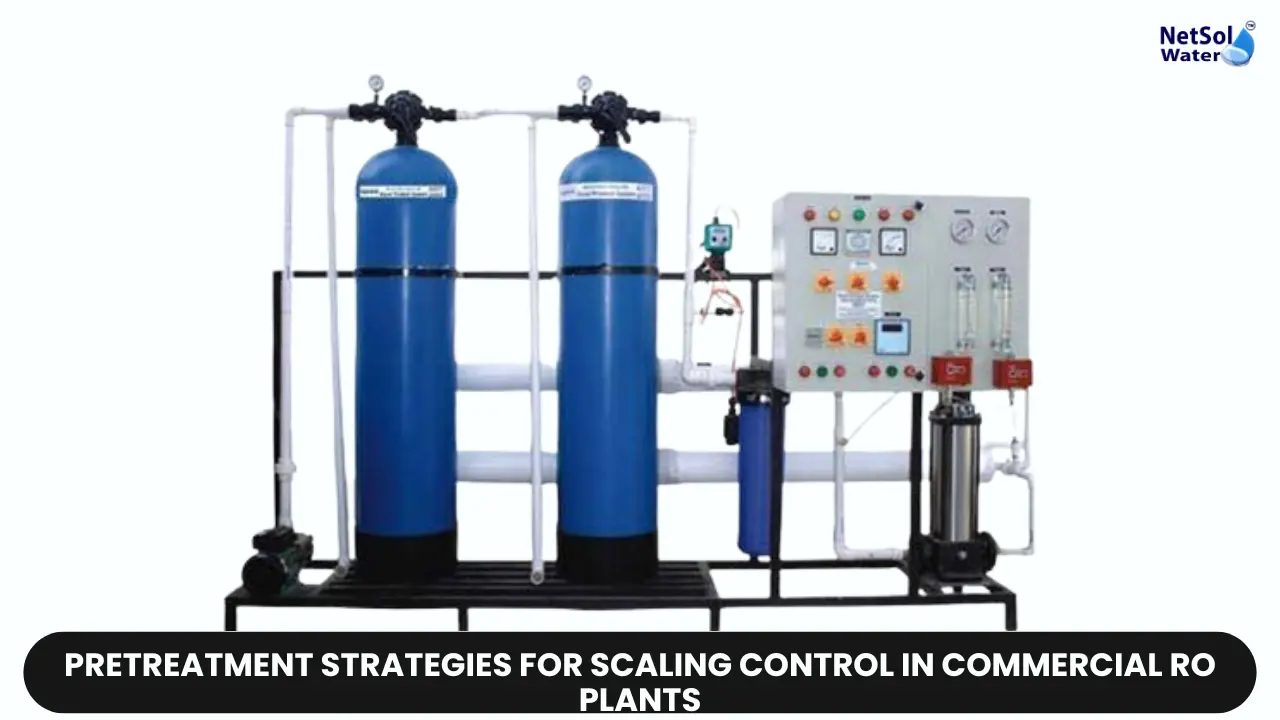Reverse osmosis (RO) is a common method used in commercial RO plants to purify water and remove salt for desalination. However, a big problem with RO is scaling, which happens when salts that don't dissolve well build upon the membrane surface. This can slow down water production, make the system use more energy, and wear out the membrane faster. To tackle this issue, it's essential to have good pretreatment strategies in place to control scaling and keep the RO plant running smoothly.
Understanding Scaling
Scaling is the deposition of inorganic salts, such as calcium carbonate, calcium sulfate, and silica, on the membrane surface. These salts have low solubility in water and can precipitate when certain conditions are met, such as high concentrations, changes in temperature, or pH. Scaling can occur due to various factors, including the feed water quality, operating conditions, and the type of membrane used.
Common Scaling Compounds
The most common scaling compounds encountered in commercial RO plants are:
1. Calcium Carbonate (CaCO3): This compound is formed when calcium and bicarbonate ions are present in the feed water. Calcium carbonate scaling is influenced by factors such as pH, temperature, and the presence of other ions.
2. Calcium Sulfate (CaSO4): This compound can precipitate when the concentrations of calcium and sulfate ions exceed their solubility limit. Calcium sulfate scaling is more common in brackish water and seawater desalination plants.
3. Silica (SiO2): Silica scaling can occur when the concentration of dissolved silica in the feed water exceeds its solubility limit. Silica scaling is more prevalent in high-pH environments and can be exacerbated by elevated temperatures.
Pretreatment Strategies
Pretreatment strategies for scaling control in commercial RO plants can be divided into chemical and physical methods.
Chemical Methods:
1. Acid Addition: Adding acids, such as hydrochloric acid or sulfuric acid, can lower the pH of the feed water, which helps to reduce the scaling potential of compounds like calcium carbonate and silica.
2. Antiscalant Dosing: Antiscalants are chemical additives that inhibit the precipitation and growth of scale-forming compounds. They work by disrupting the nucleation and crystal growth processes, preventing the formation of large-scale deposits on the membrane surface.
3. Softening: Water softening techniques, such as ion exchange or lime softening, can remove or reduce the concentrations of scaling ions like calcium and magnesium from the feed water, reducing the scaling potential.
Physical Methods:
1. Filtration: Various filtration techniques, such as multimedia filtration, cartridge filtration, or microfiltration, can remove suspended solids and colloidal particles from the feed water, reducing the potential for scaling.
2. Clarification: Clarification processes, like coagulation and sedimentation, can remove suspended solids and colloids from the feed water, reducing the scaling potential and extending the life of subsequent pretreatment equipment.
3. Pellet Reactors: Pellet reactors, also known as calcite contactors, are used to remove temporary hardness (bicarbonate alkalinity) from the feed water, reducing the scaling potential of calcium carbonate.
Integrated Pretreatment Approaches
In many commercial RO plants, a combination of pretreatment strategies is employed to achieve effective scaling control. For example, a typical pretreatment system might include multimedia filtration, acid addition, and antiscalant dosing. The specific combination of pretreatment methods depends on the feed water quality, the desired product water quality, and the operational constraints of the plant.
Monitoring and Optimization
Continuous monitoring and optimization of the pretreatment system are essential for maintaining effective scaling control in commercial RO plants. Key parameters to monitor include pH, temperature, conductivity, and the concentrations of scaling ions and antiscalants. Regular membrane cleaning and replacement schedules should also be implemented to mitigate the effects of any residual scaling.
Conclusion
Preventing scaling is a big challenge in commercial reverse osmosis (RO) plants, and having good pretreatment strategies is key for keeping it under control and making sure the plant runs well for a long time. There are different ways to do this, like adding chemicals such as acids, using antiscalant solutions, and softening the water. You can also use physical methods such as filtration, clarification, or pellet reactors. Sometimes, a combination of these methods works best for dealing with specific scaling issues. It's important to keep an eye on the pretreatment system all the time and make adjustments as needed. Plus, regularly cleaning and changing the membranes is crucial for keeping the RO plant working efficiently and avoiding problems with scaling.
Do you need an advice or assistance on selecting the best water and waste water treatment unit? We have solutions for all your problems!
Let us now your problem, our experts will make sure that it goes away.
For an assistance or related query,
Call on +91-965-060-8473
Or write us at enquiry@netsolwater.com



